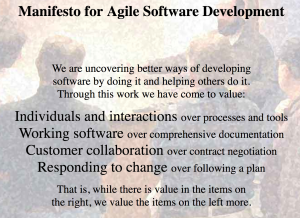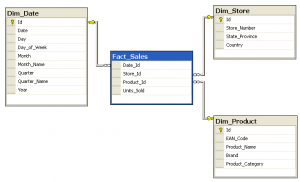Of course, any discussion of Agile values starts with the Agile Manifesto. The first sentence declares that Agile development is about seeking better ways and helping others. Then, as if espousing self-evident truths, the founders present four relative value statements. Finally, they emphasize appropriate balance, saying that the relatively less valued items aren’t worthless: implying that they are to be maintained inasmuch as they support the relatively more valued items.
 While there is value in the four relative value statements, I believe most successful Agilists value the first and last statements more. So to me, the core Agile values are continuous improvement, helping others, and balance.
While there is value in the four relative value statements, I believe most successful Agilists value the first and last statements more. So to me, the core Agile values are continuous improvement, helping others, and balance.
There’s a lot written about Agile behaviors, but as I read most is geared toward scrummasters or managers, and most is about transitioning from the waterfall world. Starting from the premise that Agile methods are established, focusing on participants rather than managers, and based on the assumption that behaviors are grounded in values, this post details the values and behaviors I’ve observed of those who succeed as Agile team members.







